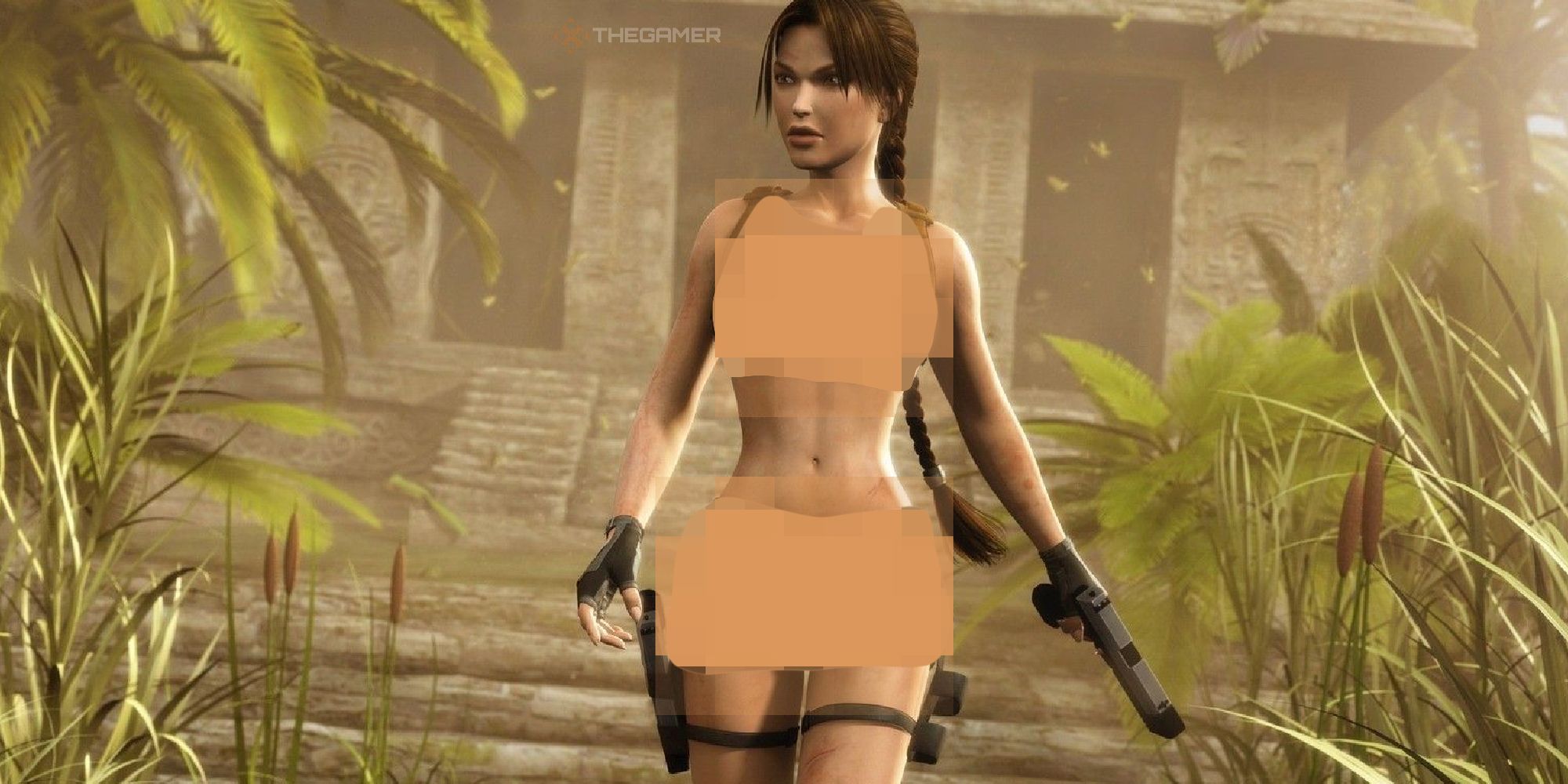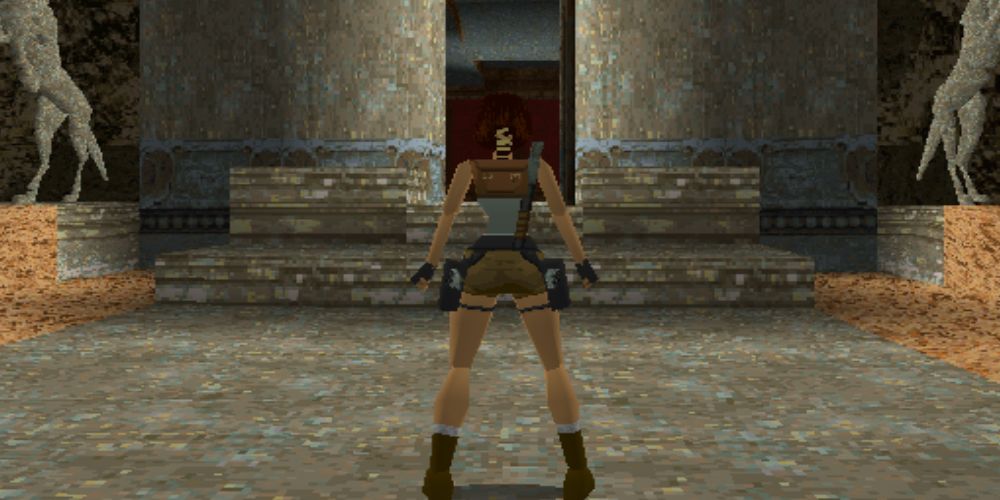There are so many myths behind the development of Tomb Raider. These days, games are developed by huge teams working on extremely specific tasks - it took 2,000 people to make The Last of Us Part 2, for example. Back in the '90s, when Lara first took the world by storm, teams were much smaller. The core team of the first Tomb Raider consisted of just six people, two of whom were co-creator Paul Douglas and programmer Gavin Rummery. Because smaller teams meant it was easier for individuals to slip their own Easter eggs into games, and because gaming in the '90s was far more of a boys club than it is even today, a rumour persisted around a secret Easter egg: Nude Raider.
The premise of the secret was simple. You either pushed a certain button combination, activated a certain bug, or found a certain collectible, and Lara Croft would strip naked. How exactly this cheat was activated varied, and for good reason - the Nude Raider code was never true.
However, despite the fact that a naked Lara Croft in 1996 would just be a vague, flesh coloured stick person, the rumour persisted. For Douglas and Rummery, both of whom will be sharing their full thoughts on the Tomb Raider series later in the week, Nude Raider was as annoying as it was infamous - especially as more people started to believe it.
“It annoyed us because a) it didn’t exist and b) it meant we’d meet people at parties who thought we were perverts making pornographic video games for children,” Rummery says. It was for this reason that the shower scene was added in Tomb Raider 2 - not to titillate players, but to tell them off. “Our response was to add the ‘shower scene’ at the end of Tomb Raider 2 where Lara shoots the player for daring to try and spy on her undressing.”
'90s gaming is full of similar rumours, although admittedly few involve the protagonist getting naked. In the days before everything was one Google search away from an answer, these rumours spread through playgrounds, offices, online forums, and magazines. Someone, somewhere, knew there was a way to get Lara Croft naked, or to find Mew under that truck. They didn't know how, but they definitely knew it was true - the weird thing is, they were almost right.
While Nude Raider was never true, and was never planned for, Douglas tells me that there was some pressure from management to add it in later, and feels that part of the reason the rumour endured was because people marketing the game wanted it too. "I thought it was just a typical juvenile reaction," he says. "Even during development someone in management, perhaps half-jokingly, asked us for something similar and we told them to bog off. There certainly wasn't anything in the game that did that but there was a fan made patch for the PC sometime after release. What was a little surprising is how long the publisher leaned into it. Alas, those were the days when all publicity was seen as good regardless how it depicted the character."
In a way, the Nude Raider myth, and the fact management pushed for it, is oddly fitting. Lara Croft is an icon for many women that had to enjoy the sexism associated with gaming, and 25 years later the Nude Raider myth is dead and gone, and she's still here. Lara had to endure the same hostility and mockery as the rest of us, and she made it through.


